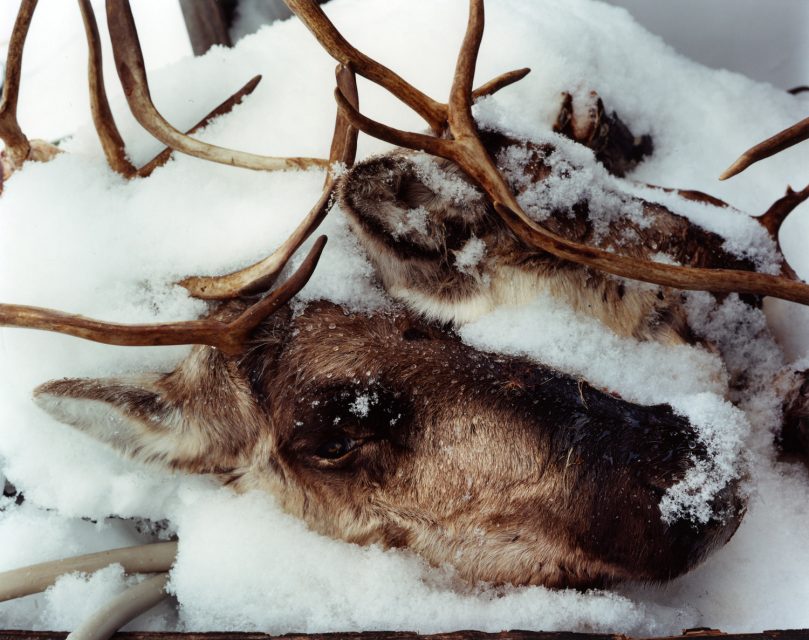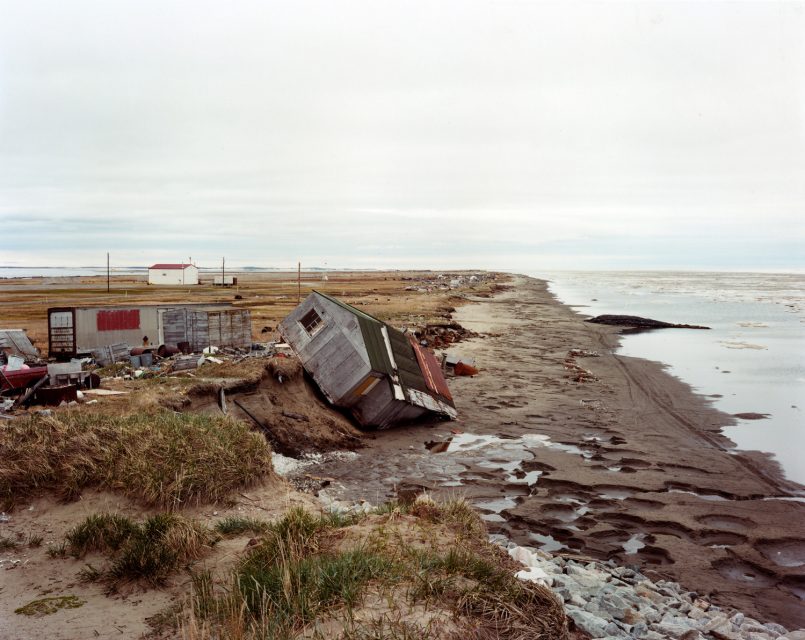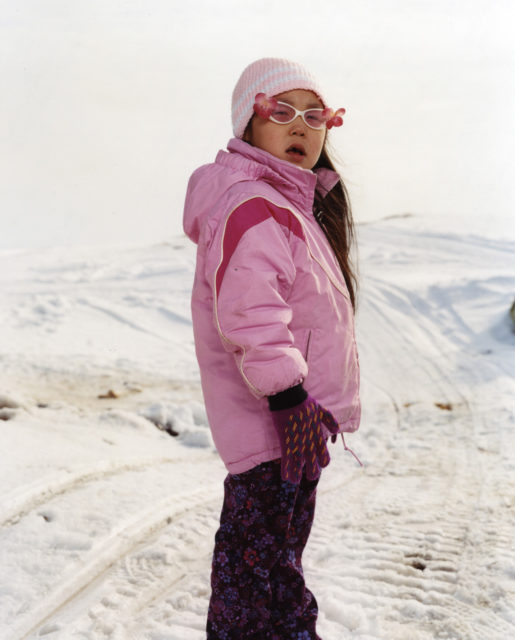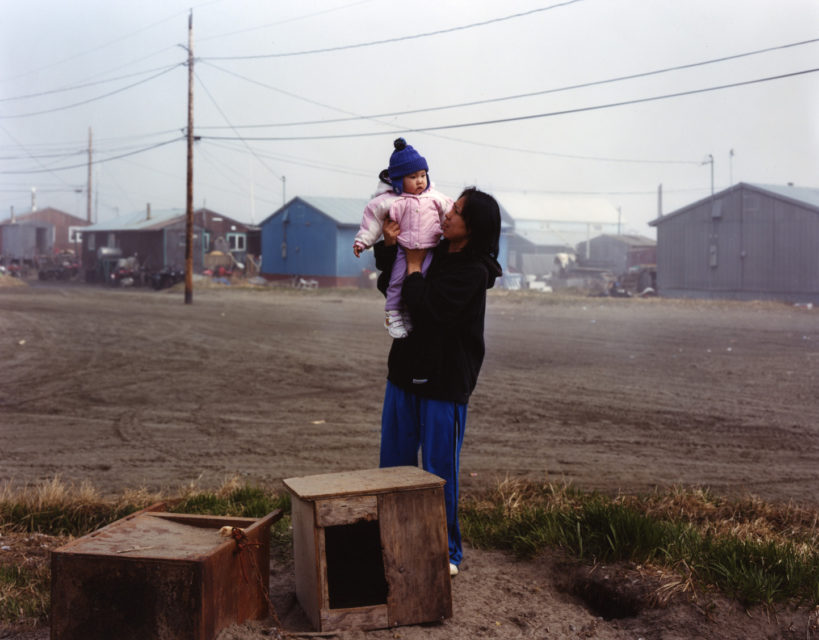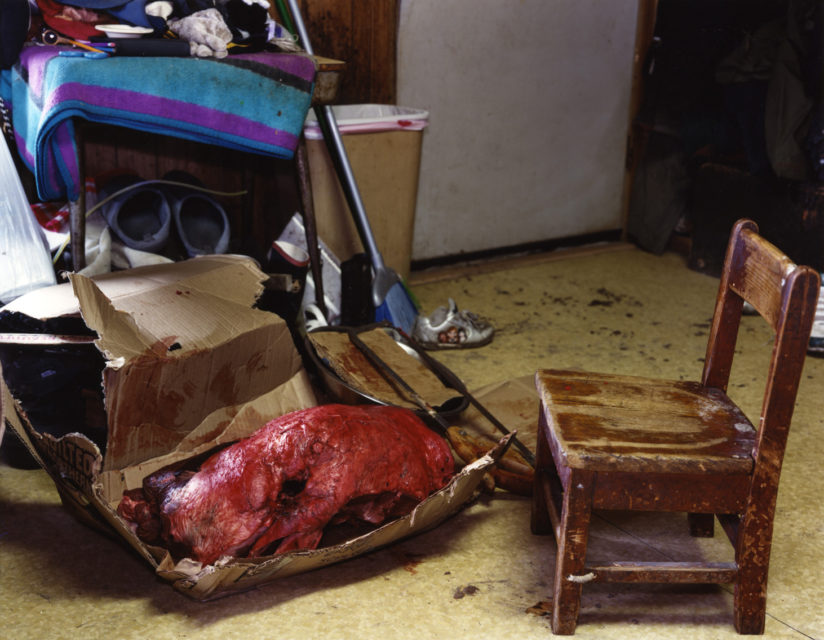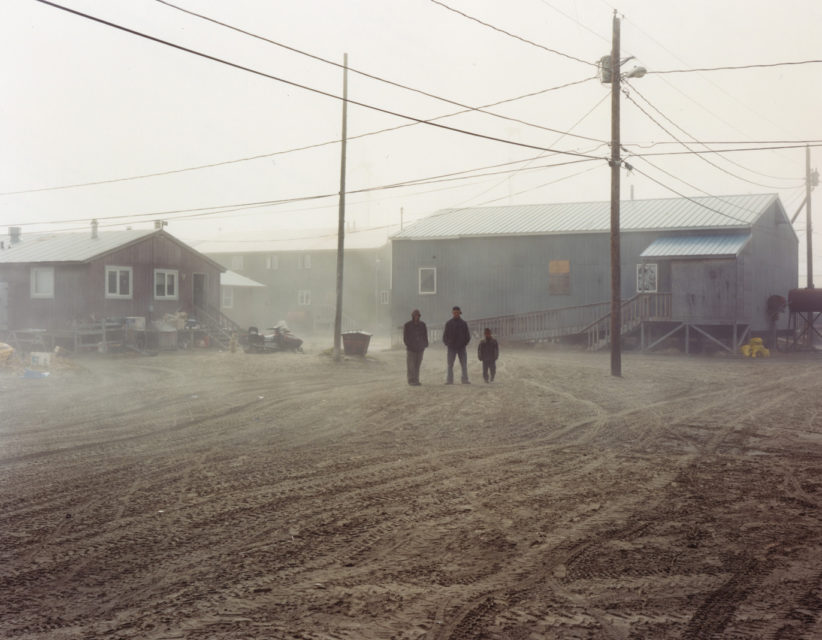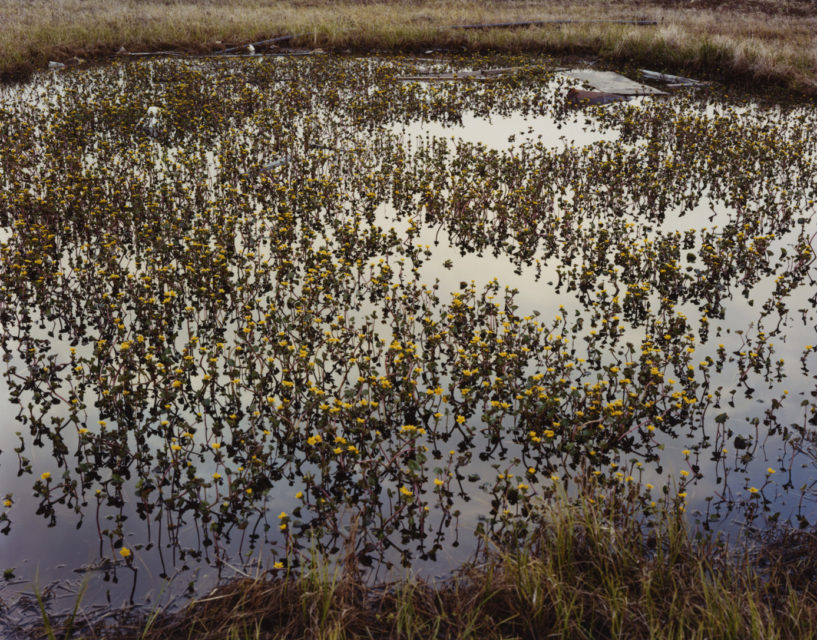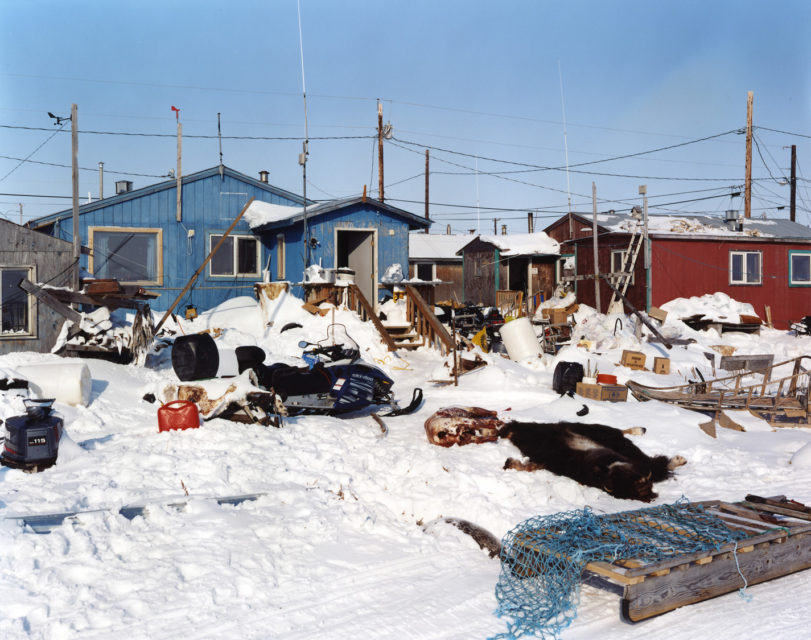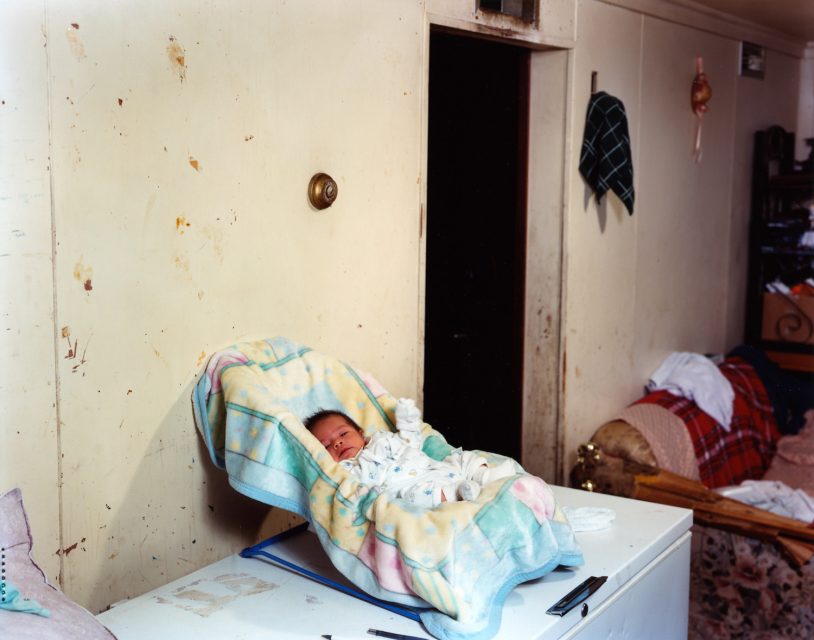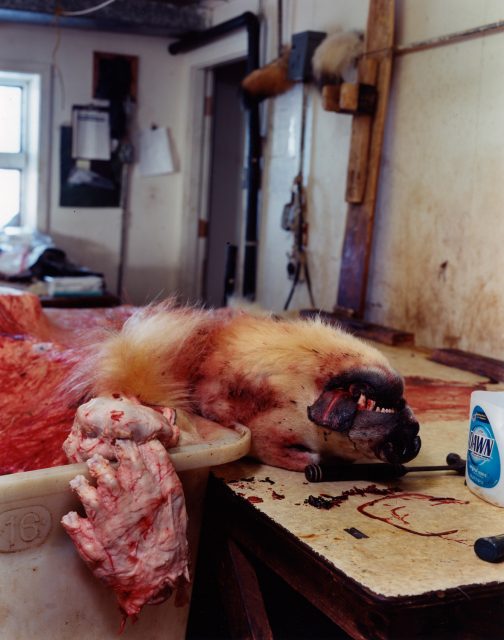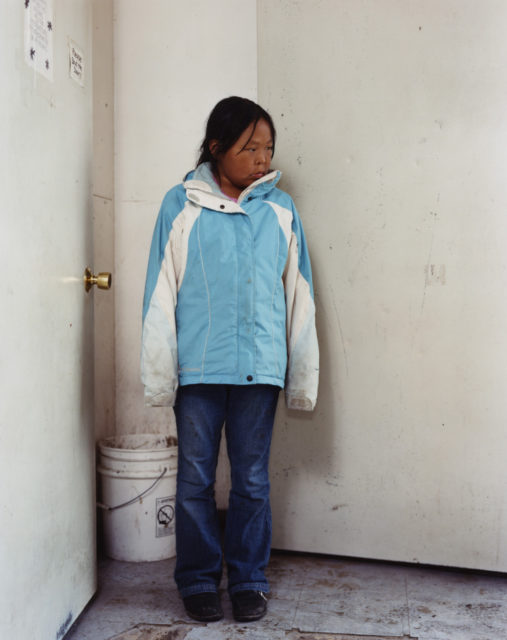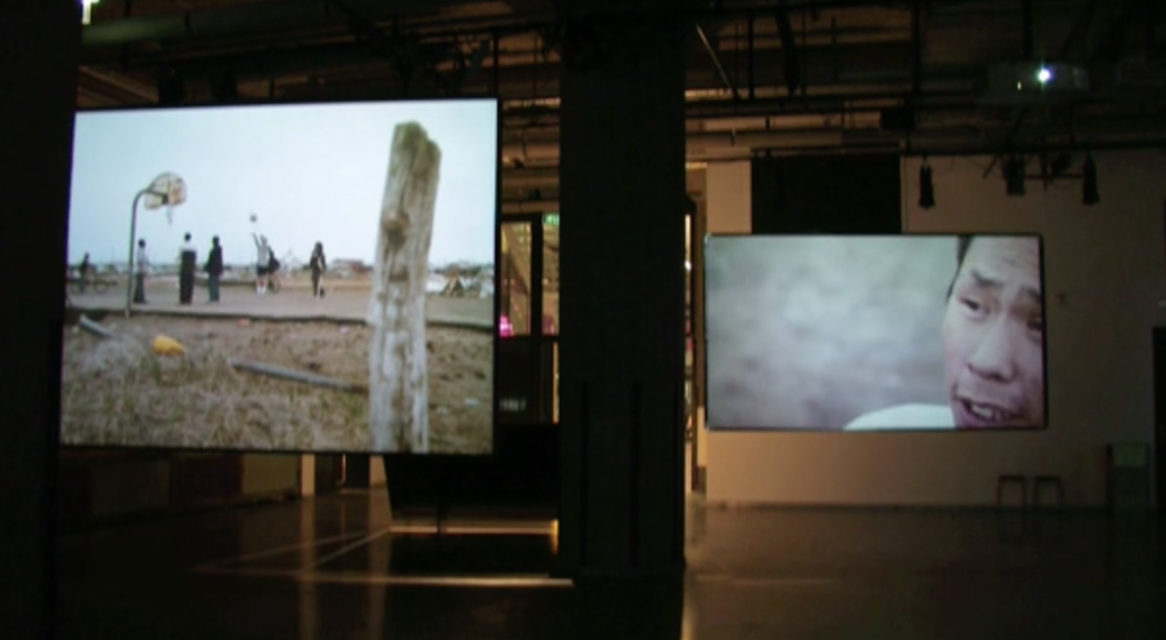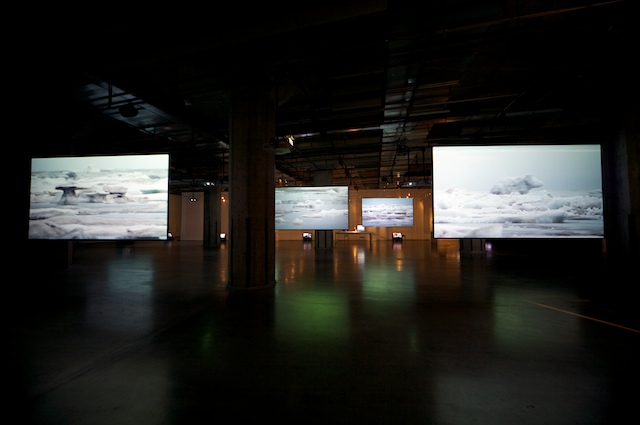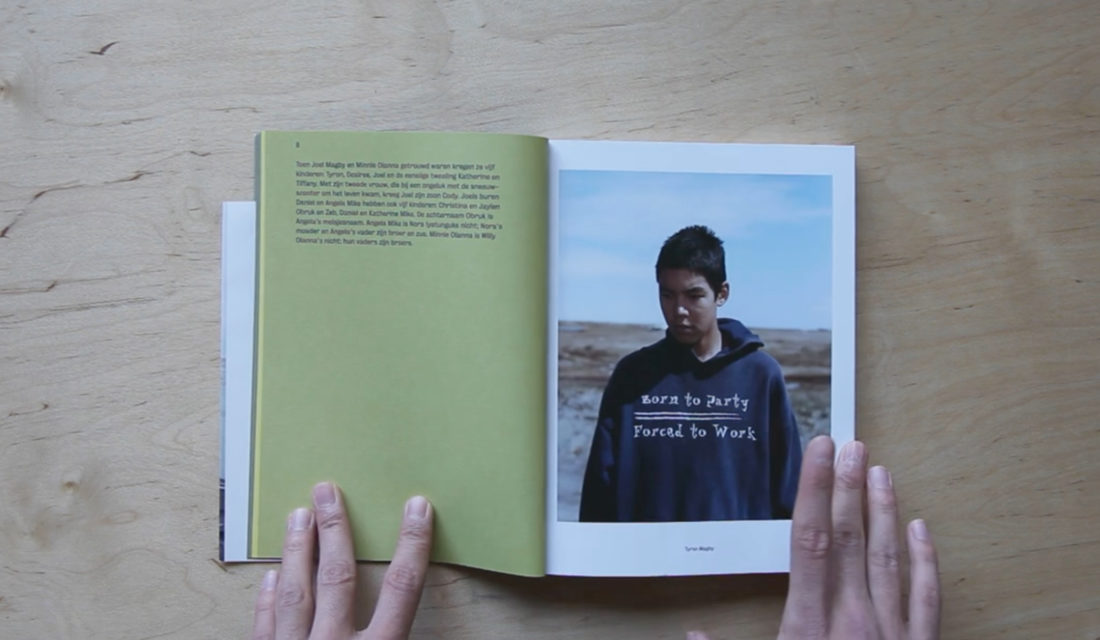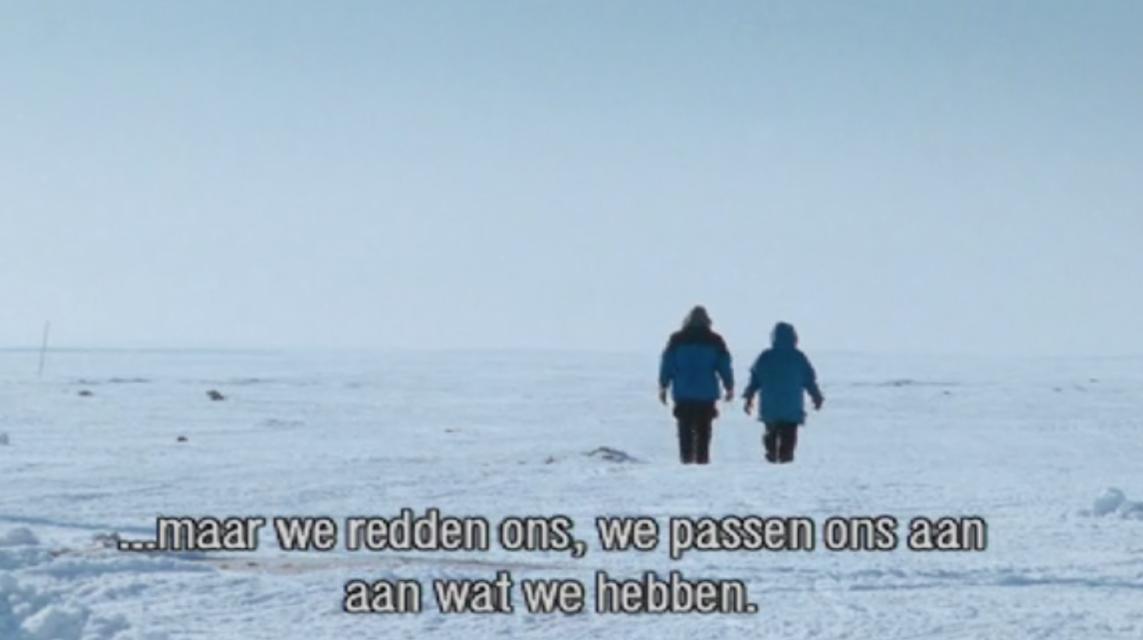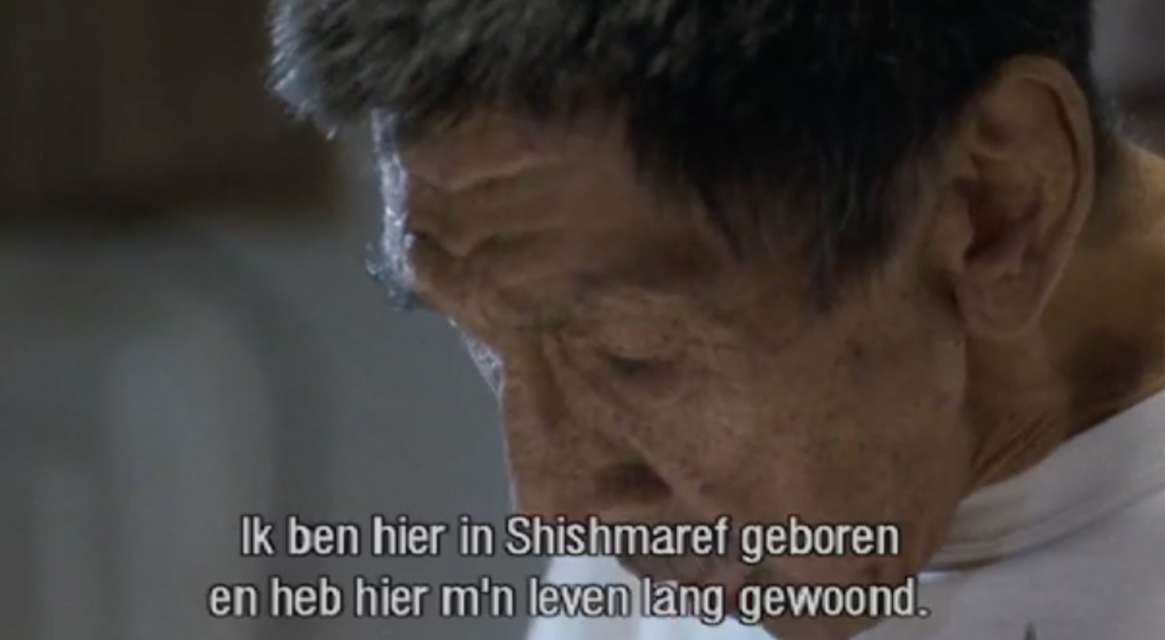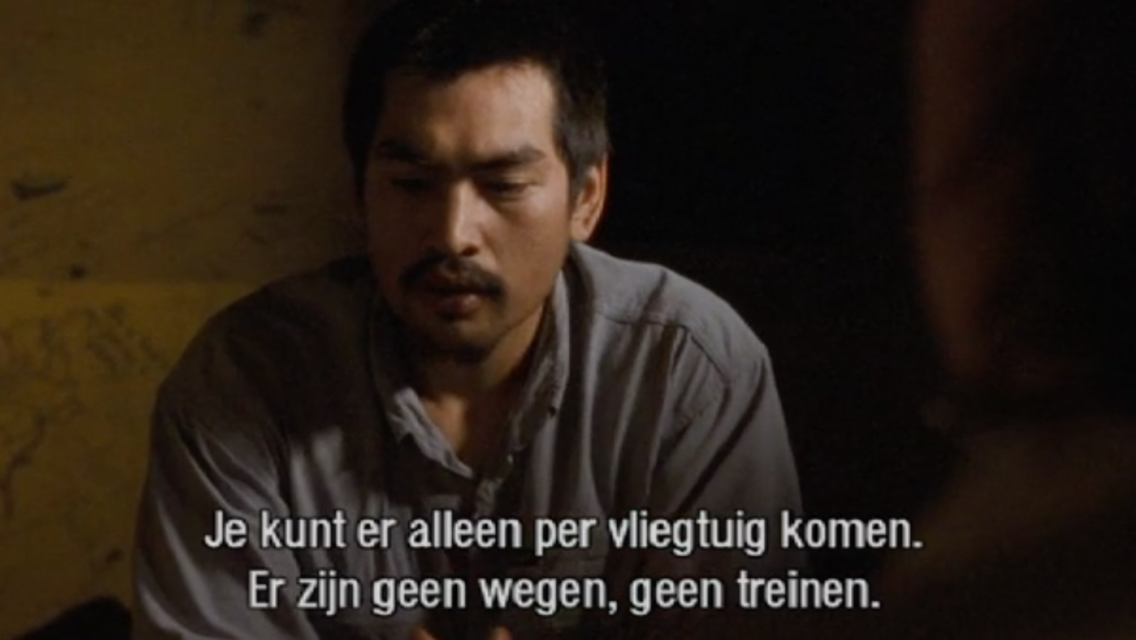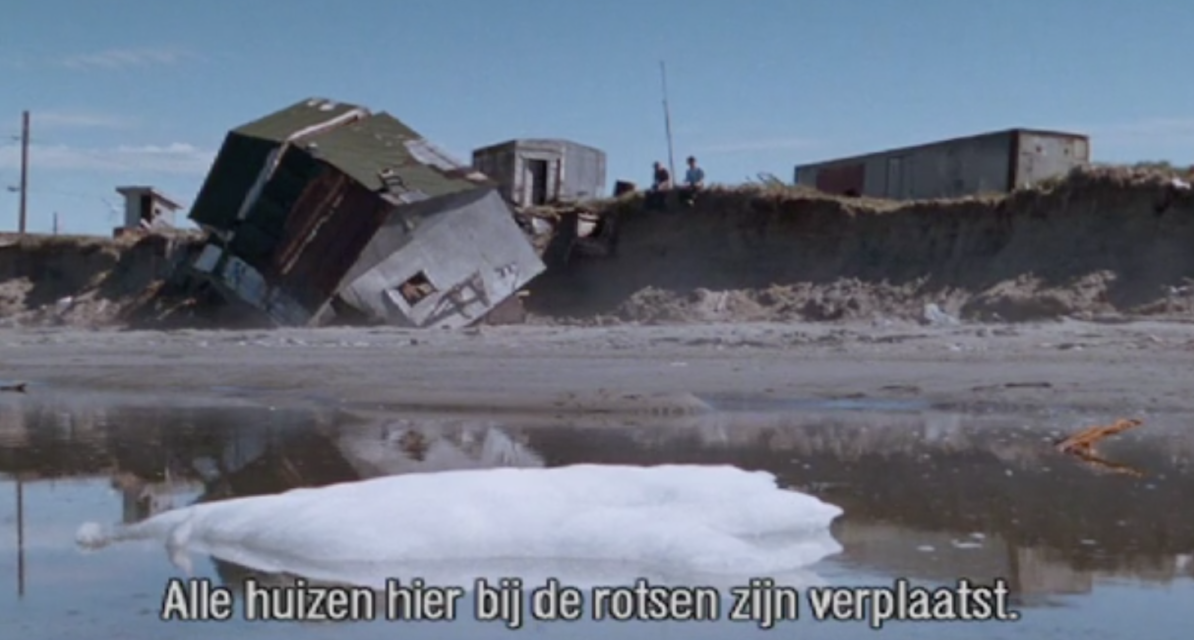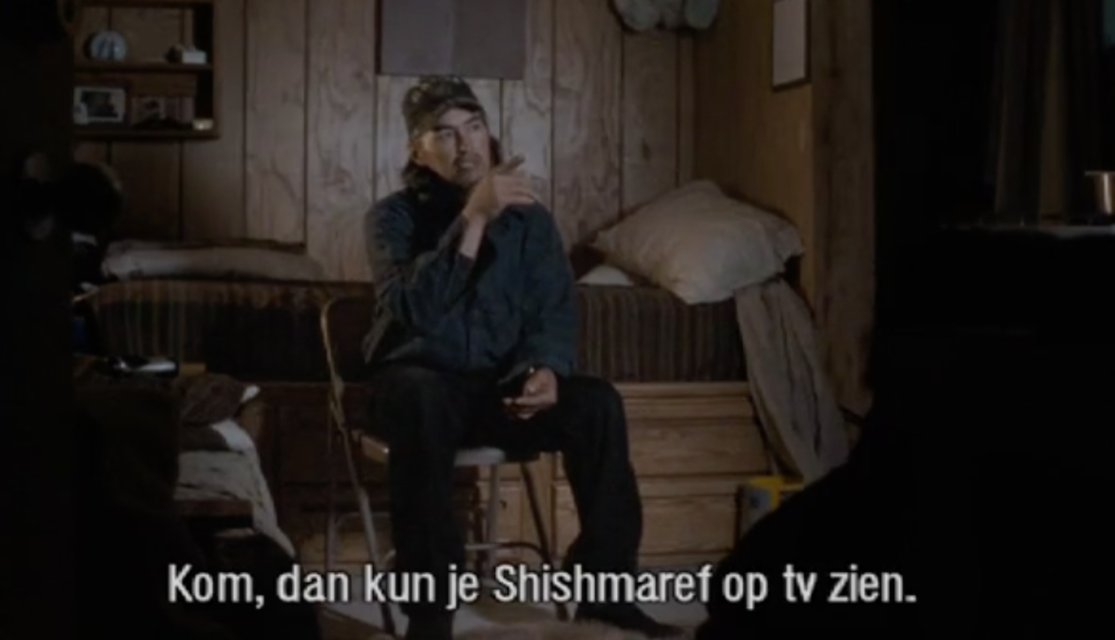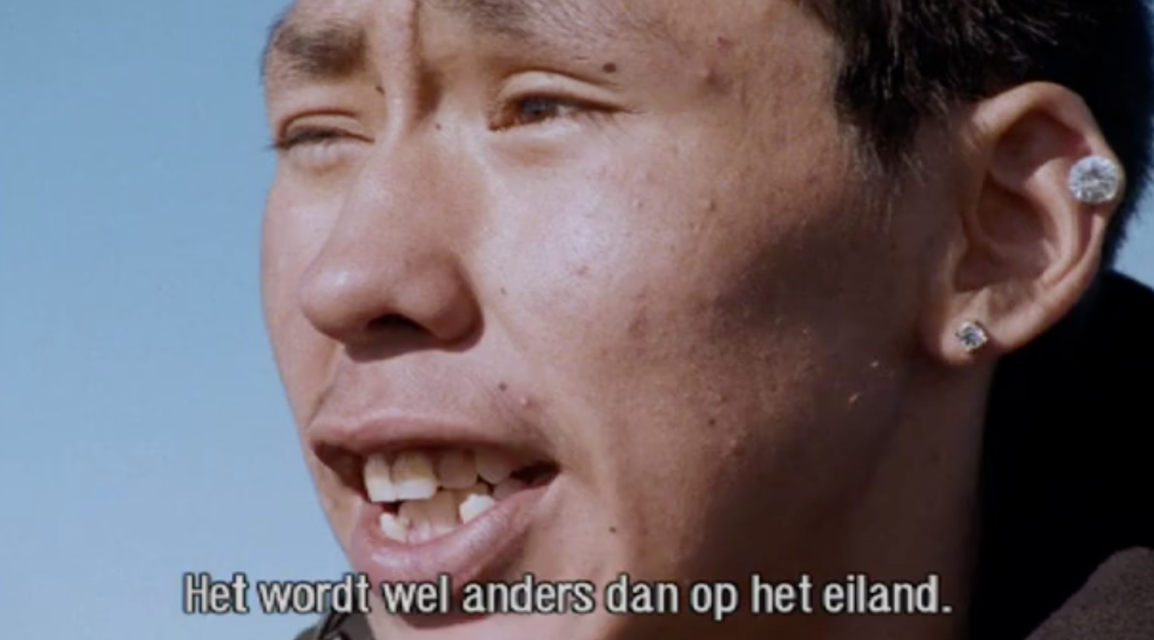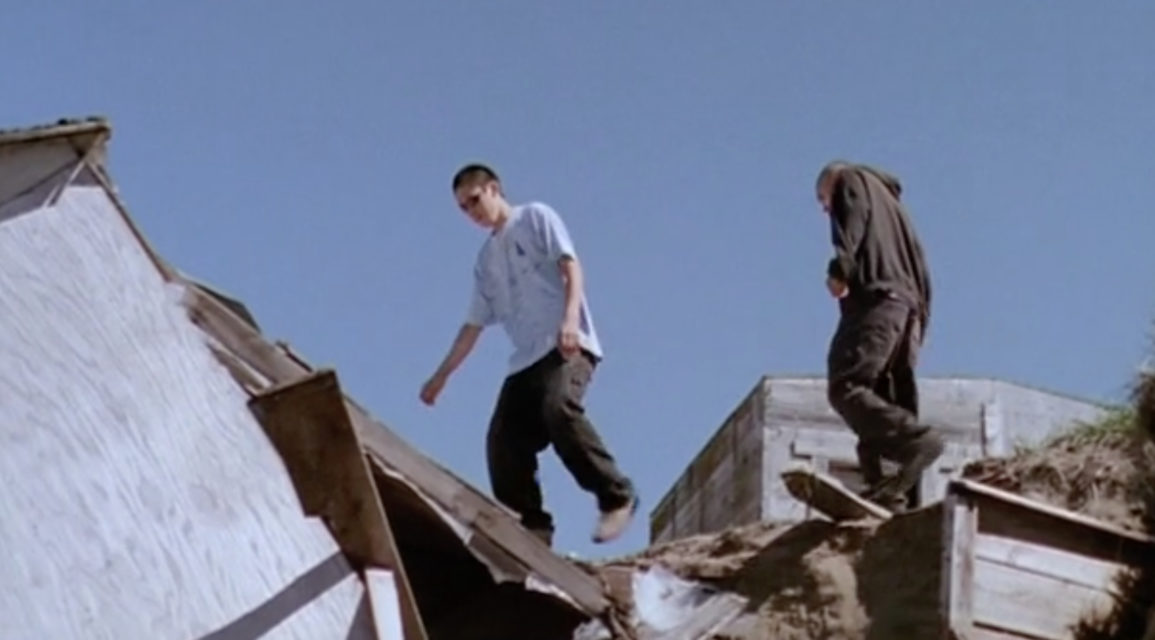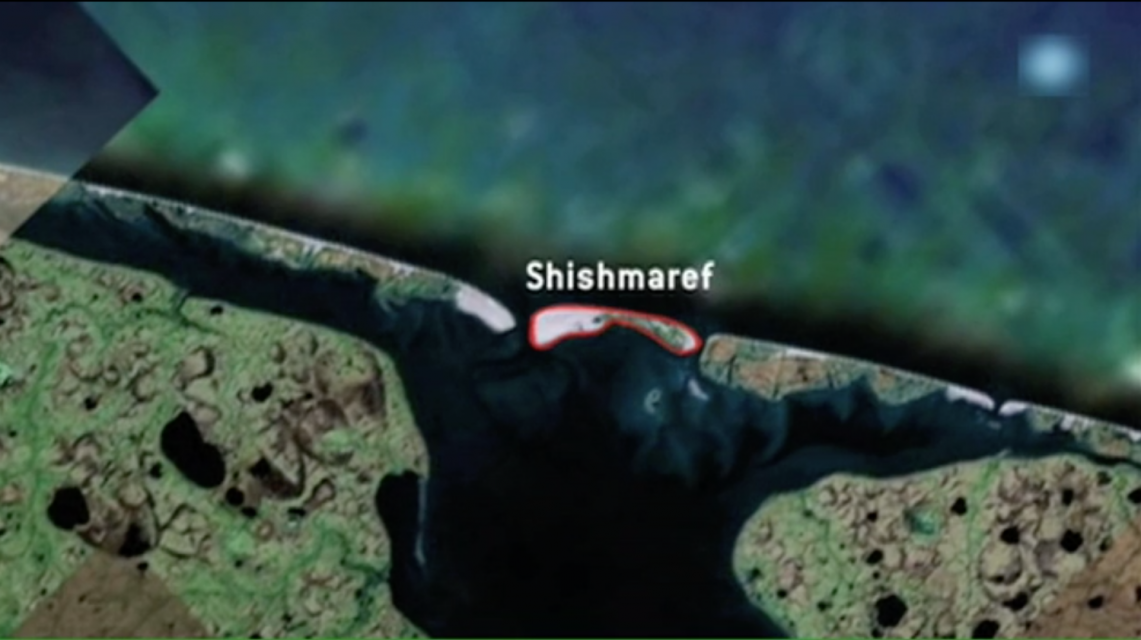As a result of global warming Shishmaref, a small island on the west coast of Alaska slightly south of the polar circle, inhabited by 600 Inupiaq, will crumble into the ocean in less then ten years time. Fourteen houses have been moved to safer ground already, another six are jeopardized by the violent waves of winter storms. The island and its inhabitants seem set to become the first clear victims of global warming and inadequate international environmental awareness.
A majority of the Inupiaq population have voted to move to a new location on the Alaska mainland across the bay, where they hope to preserve their traditional way of life as much as possible. Debates held during the past few years about where to relocate, revealed tensions between the older generations and adolescents. The youth are bored with five bingo evenings a week and the modest sports hall as the only entertainment facility available. The grown-ups – and especially the women – fear the influence of the city and the accompanying confrontation with alcohol and drugs, still totally absent on Shishmaref, responsible for the collapse of so many small communities in this region and others.
The countless news crews that visited the island over the past years paid no attention to the society as such. Almost all of them reported from the island in front of the house that hangs precariously over the eroding coastline. The climate message was the main focus of their stories. To filmmaker Jan Louter and photographer Dana Lixenberg, in contrast, the climate was a backdrop for the histories of people, of a community, of a life in all its paradoxical intricacies. Images of the hunt and of immense seascapes and snow-covered landscapes interact with intimate portraits and scenes from cluttered interiors. The impression it leaves yields more questions than answers: questions about identity, dignity, transience and mortality. What does it mean for an individual, for a culture to be forced to leave the land where their forefathers were born?
The Last Days of Shishmaref is a project employing diverse media which supplement and enhance one another: a website, a documentary film, a book, a touring exhibition and an educational project for secondary schools, accompanied by a DVD. Combining a variety of contemporary and historical materials and the input of professionals as well as the community, the project will appeal to both readers with an interest in anthropology and photography as well as those concerned with climate change.
Exhibition
In the exhibition Dana Lixenbergs photographs are presented alongside a spatial montage of film scenes from Jan Louters film, shot by cameraman Melle van Essen. The Last Days Of Shishmaref was on show at LPll, Rotterdam (The Netherlands) from 9 November 2008 until 11 January 2009.
Book
Family ties play a central role in the book with photos by Dana Lixenberg and Taco Hidde Bakker. The portraits, details from interiors, village tableaux, land- en seascapes give a nuanced impression of a close community balancing between a past rooted in tradition and an uncertain future. Lixenberg took her pictures with a large-format camera, a method that requires an intimate collaboration between the photographer and her subject.
BuyFilm
In the documentary Lixenberg and Louter depict the impending end of the traditional lifestyle on the island of Shishmaref trough the lives of three Inupiat families. Despite the alarming situation, the documentary has not become a political manifesto but rather a film about identity, transience, mortality, and the clash between different eras and cultures.
Education
Alongside the exhibition, an extended educational programme was developed.
Workshop ‘The Power of Images’
During the exhibition, schoolclasses were able to attend a workshop entitled: The Power of Images. Imagine that the country you live in will be gone in a while, because it will disappear into the sea. What do you do to give the world a wake-up call and make people take action? A well chosen picture can make your message stronger. Inspired by the story and pictures of Shishmaref, pupils researched the influence that photos in the media have on their own conceptualization. In the photography assignment, the pupils themselves created a convincing image to convey a message. Students chose themes like climate change, identity, image manipulation and media.
Recollections of a drowned land
Kunstgebouw Zuid-Holland developed an educational project based on The Last Days of Shishmaref. This program was made in the framework of Zuid-Holland Waterland, a project for secondary schools on water and water management. The topic was discussed in detail from local, national and international perspectives, with Shishmaref as the international angle. In this module, creative assignments encouraged pupils to consider the experiences of young people on the island of Sarichef and how they themselves perceive them.
Video workshop
During one of the final weeks of school in Shishmaref in late April, 2008, four students of the Shishmaref School enrolled in a video workshop, organized by Taco Hidde Bakker (Paradox) and Takashi Sakurai (Alaska Center for Documentary Film, Fairbanks USA). By making videos, the young reporters were raising income for the S.O.S. foundation (Save Our Shishmaref). This organization, run by students of the Shishmaref School, aims to support and speed up the relocation efforts of the village people.
Warning: Trying to access array offset on value of type bool in /domains/paradox.nl/DEFAULT/wp-content/themes/paradox/single-project.php on line 533
